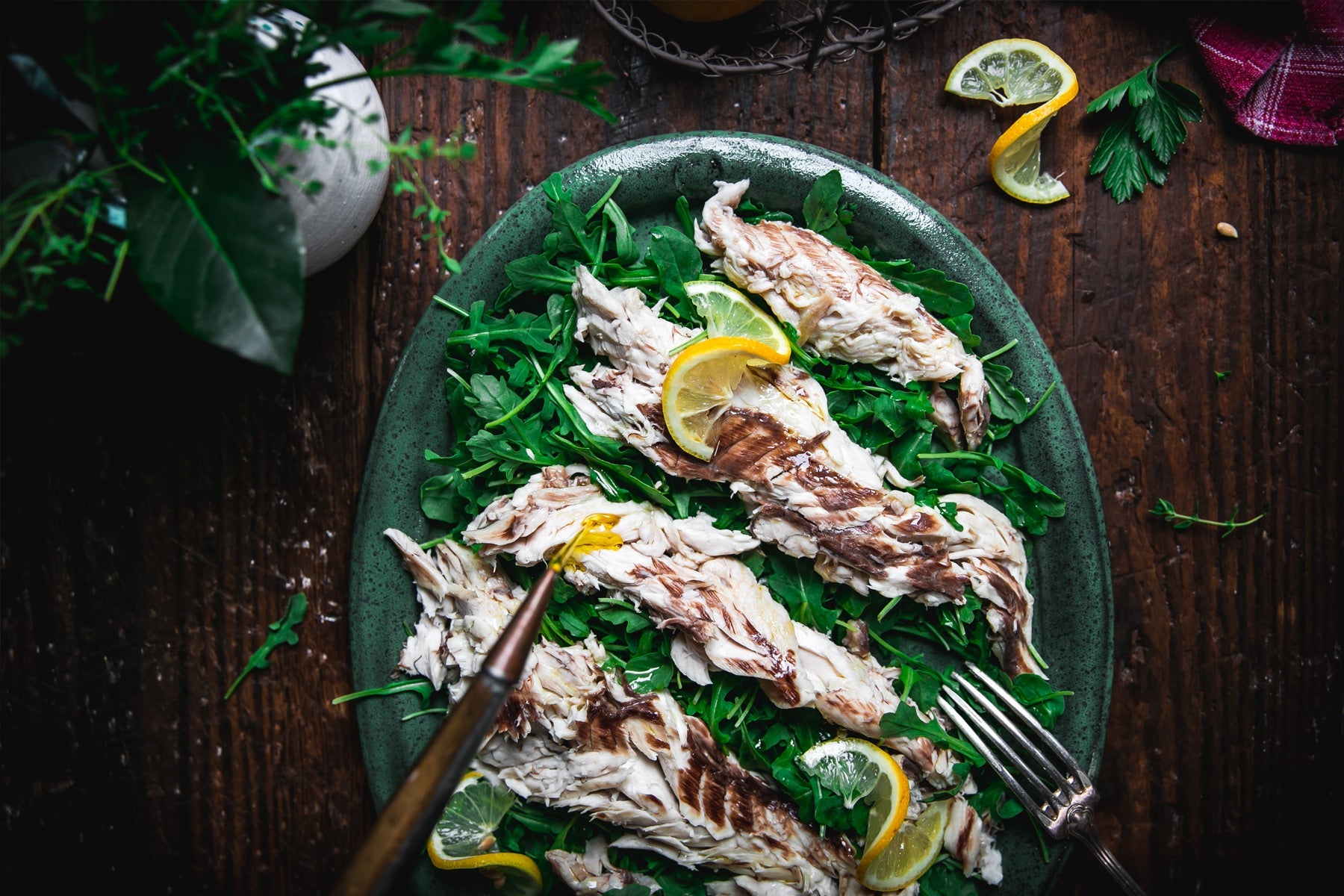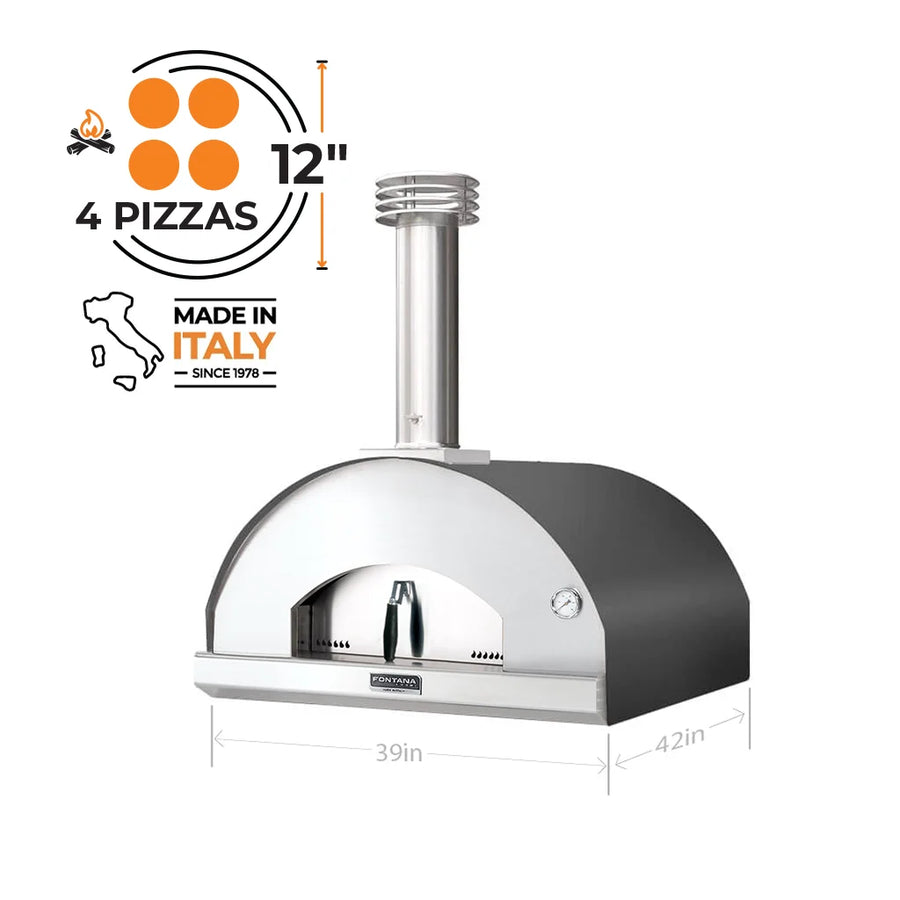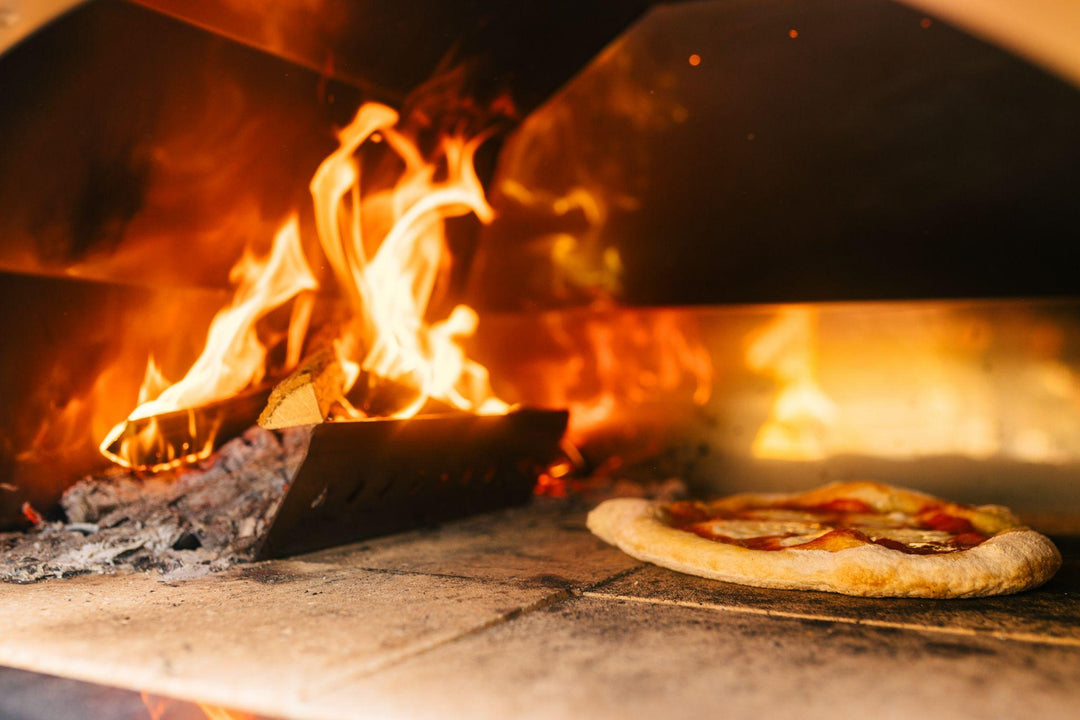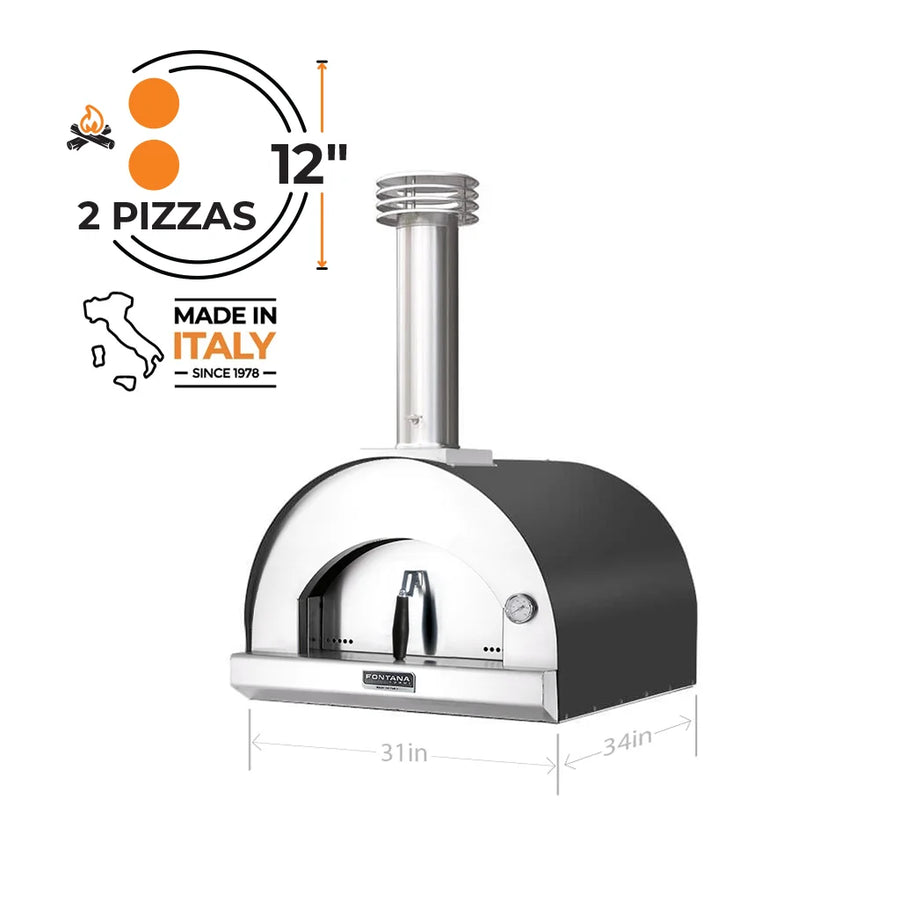Red Drum Fish in Salt Crust

Red Drum Fish in Salt Crust
Rated 5.0 stars by 1 users
Red Drum baked in a Salt Crust, renders a tender, aromatic and most delicious fish, elevated to a whole new level. Simple and extremely fun, this ancient, insulating salt method dating back to Mongolian cuisine, is a way of cooking fish or chicken by totally covering it up with coarse salt mixed with aromatics such as fresh herbs and lemon zest, finally moistened with egg whites. Calculations for perfect results are straightforward, as the fish is prepared to perfection in the Fontana Forni Marinara wood-fired Oven. Let's get started!
You will need:
-
-
Infrared thermometer
-
Baking sheet
-
Parchment paper
-
Meat mallet
-
1.4 kilos Red Drum fish
-
3 boxes 48oz Coarse Sea Salt or Coarse Kosher salt
-
5 egg whites
-
Zest of one lemon
-
1/2 lemon thinly sliced - the other half to serve with baked fish when served
-
1-2 small garlic cloves, thinly sliced
-
12 sprigs lemon thyme - some for the salt, and a few for the belly of the fish
-
3 sprigs flat leaf parsley
-
1 sprig rosemary
-
1 bay leaf
Ingredients Needed
Directions
Preheat the Marinara wood-fired Oven to 400°F (232°C).
Make sure the fish is gutted, leaving the scales on, as they serve as a barrier that will prevent the meat of the fish from being over salted.
Rinse the fish inside and out and pat dry with a paper towels.
Crack the eggs separating the yolks from whites. The yolks can be refrigerated and later used for a Crema Pasticcera.
Place the egg whites into a large bowl and whisk until foamy. Pour the whisked egg whites over the salt, as well as the zest of a lemon and thyme, then thoroughly mix with your hands. The whites will work as glue, keeping the salt from crumbling off the fish.
Thinly slice the cloves of garlic as well as half a lemon. Tuck the bay leaf, parsley, rosemary, sliced garlic and lemon slices into the cavity of the fish.
Place parchment paper on a baking sheet. A sheet of aluminum foil is also an option. Doing this will make clean up easier later on.
Roughly form the shape of the fish on the parchment paper with a bed of salt, about 1.5 cm - 1/2" deep, with about 1" frame around it. Lay the fish on top paying attention to overlap the two flaps of the belly, thus keeping the herbs and lemon slices securely inside. This also ensurers that no excess salt enters the cavity of the fish.
Begin packing the salt all over the fish, encasing it completely with the salt mixture, thus creating a second oven. With the help of both hands make sure to pack down the salt firmly on the entire fish avoiding any cracks.
Use the parchment paper to press the excess salt onto the fish, as shown in the video.
The weight of the fish will determine the amount of time it will bake in the oven. Following is a simple formula to a perfectly baked fish. For the first 100 grams of the total weight of the fish bake for 17 minutes. For every additional 100 grams of the weight of the fish, add two minutes of baking. Because our fish weighs 1,400 grams, it will take a total of 43 minutes to bake. (17+ 26 = 43) **Written below is a detailed formula for the more technical cooks.
Check the temperature of the wood-fired oven once again with the infrared thermometer, and make sure there is an active small fire burning. Carefully place the fish inside the oven making sure the salt crust does not crack, and close the door. The internal temperature of the oven can be easily regulated by slightly opening (vertical position), or closing (horizontal position) the damper on the chimney.
After 43 minutes, the salt crust that is covering the fish will have browned slightly. Remove the fish from the oven.
With a meat mallet, carefully break the salt away from the fish, as shown in the video. Brush off any remaining salt and place the fish on a clean baking pan.
With the help of a spoon and fork press down the tail and fold it over, thus breaking it off. Be mindful that this was our FIRST time filleting a large, salt-crusted fish. Watch the video for more instruction.
With the spoon cut along the belly of the fish that is still intact. Continue to do the same along the crest of the fish, separating the skin on both the dorsal and abdominal side. While still using the spoon, carefully roll the skin away from the fish beginning from the tail all the way toward the head. It will come off very easily, as shown in the video.
With the help of a spoon and fork remove the small dorsal spines of the fish as well as the fins from the belly.
Run the spoon along the dark line at the center of the fillet and divide it into two parts.
Carefully pull away the upper fillet closest to the dorsal part of the fish as you carefully catch it on a spatula.
Transfer the fillet on the bed of arugula and repeat the same process with the lower fillet, closest to the belly.
Remove the spine, then proceed to pick up the rest of the lower fillet still resting on the skin below.
Once plated on the bed of arugula, drizzle the fish fillets with good olive oil, and serve with wedges of fresh lemon. Enjoy!
Master formula for baking Salt Crusted fish
FORMULA: Time to Cook = 17 + [(n-1) x 2] Where n = Total Fish weight in grams ÷ 100*****Because our particular fish weighs 1,400 grams, n = 14 It will take a total of 43 minutes to bake.
n = 1400 ÷ 100
n = 14
TIME TO COOK = 17 + [ (14 - 1) x 2] = 17 + (13 x 2) = 17 + 26
TIME TO COOK = 43 minutes






